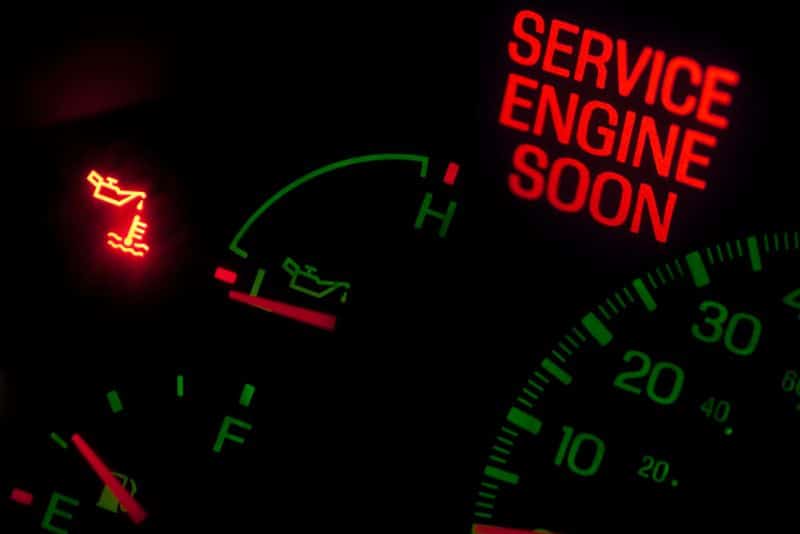Picture this: You’re cruising down the highway, enjoying your drive, when suddenly, your vehicle’s check engine light comes on. It’s a dreaded sight for any driver. But instead of panicking, wouldn’t you like to know what it means and how to deal with it? Here are the potential issues that a check engine light can signify and how you can address them to keep your vehicle running smoothly.

The Basics of the Check Engine Light
First things first, let’s demystify that little orange or yellow engine-shaped icon on your dashboard. You might think your car is in perfect condition, but dealing with engine light no codes can be a real mystery for even experienced mechanics. The check engine light is a built-in diagnostic tool that your vehicle uses to communicate with you. It’s there to indicate that something isn’t quite right with your vehicle’s systems. When it comes on, it’s like your car’s way of saying, “Hey, something needs attention.”
Common Causes of a Check Engine Light
The causes of a check engine light can vary widely, but some are more common than others. They include issues like a loose gas cap, a faulty oxygen sensor, a malfunctioning mass airflow sensor, or a misfiring spark plug. While these may seem minor, ignoring them can lead to more significant problems down the road and affect your vehicle’s performance and fuel efficiency.
The Importance of Prompt Action
When your check engine light comes on, it’s tempting to ignore it and hope it goes away on its own. However, this is a risky move. Ignoring the light could lead to costly repairs or worsen the existing issue. It’s crucial to take your vehicle to a professional mechanic as soon as possible to diagnose and address the problem.
- Prevent Further Damage: Addressing the issue early can prevent it from escalating into a more significant and costly problem. What might be a minor repair today could become a major engine overhaul if left unattended.
- Maintain Fuel Efficiency: Many issues that trigger the check engine light can negatively impact your vehicle’s fuel efficiency. By acting promptly, you can ensure that your vehicle continues to run efficiently, saving you money at the pump.
- Compliance with Emissions Standards: A lit check engine light often signifies that your vehicle is emitting pollutants above the allowable limits. Ignoring this can lead to legal and environmental consequences. Addressing the issue promptly helps you remain compliant with emissions standards.
- Safety First: Some problems indicated by the check engine light can affect the safety of your vehicle. Components like the anti-lock brake system, traction control, or airbag systems may be compromised. Prompt action helps ensure your vehicle is safe to drive for you and others on the road.
Diagnosing the Issue
Once you’ve decided to take action, your next step is to visit a trusted mechanic. They’ll use a specialized diagnostic tool to read the error code stored in your vehicle’s onboard computer. This code points them in the right direction to identify the specific issue causing the check engine light to illuminate.
Repairing and Maintaining Your Vehicle
After diagnosis, your mechanic will recommend repairs or maintenance to resolve the problem. Whether it’s replacing a sensor, fixing a loose wire, or addressing a more significant issue, it’s essential to follow their advice promptly. Regular maintenance is key to preventing future check engine light surprises and keeping your vehicle in top shape.
- Follow the Recommended Maintenance Schedule: Your vehicle’s manufacturer provides a maintenance schedule in the owner’s manual. This schedule includes routine tasks like oil changes, air filter replacements, and fluid checks. Adhering to this schedule can prevent many problems that trigger the check engine light.
- Quality Parts and Service: When your vehicle requires replacement parts, make sure your mechanic uses high-quality, OEM (Original Equipment Manufacturer) or equivalent parts. Cutting corners on parts can lead to more frequent issues and repairs down the line.
- Regular Inspections: Beyond the scheduled maintenance, consider having your mechanic conduct periodic inspections of your vehicle. They can catch potential issues before they become major problems, helping you avoid surprise check engine light activations.
Monitoring and Preventing Future Issues
Once the repairs are done, continue to monitor your vehicle’s performance and be vigilant for any signs of trouble. Regularly scheduled maintenance, such as oil changes, air filter replacements, and spark plug checks, can go a long way in preventing the check engine light from making a surprise appearance.

The check engine light can be a source of anxiety for many drivers, but it doesn’t have to be. Understanding the basics of this warning signal and taking prompt action when it appears can save you time, money, and headaches in the long run. Remember, your vehicle is trying to tell you something important – listen to it, and you’ll enjoy smoother, trouble-free rides for years to come.
Grab our car emergency kit checklist while you’re here!
